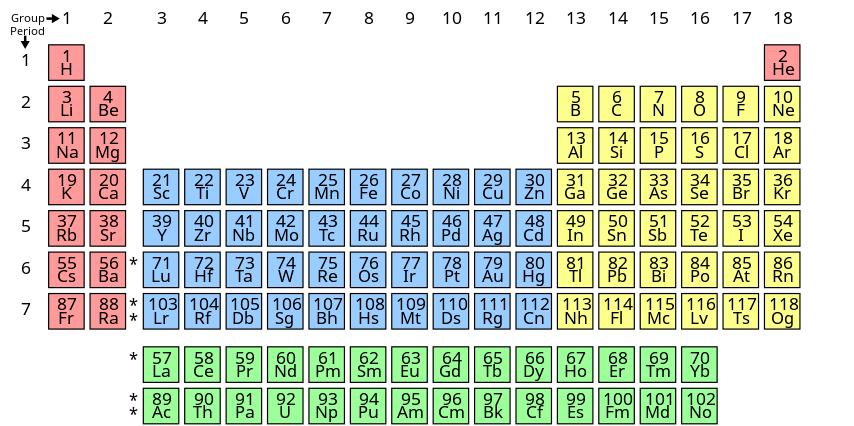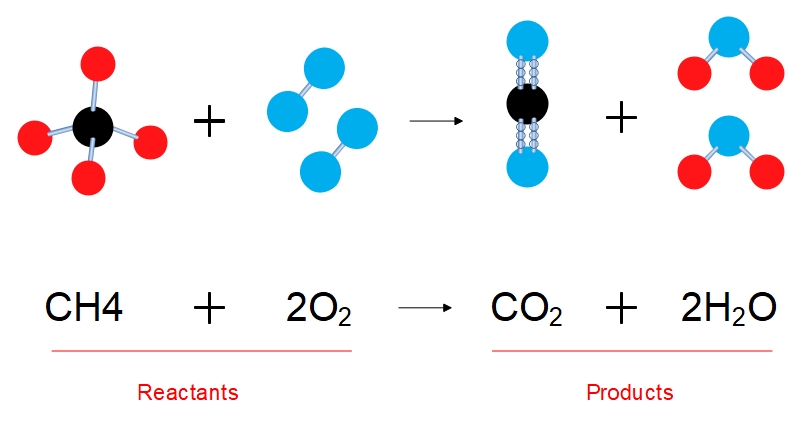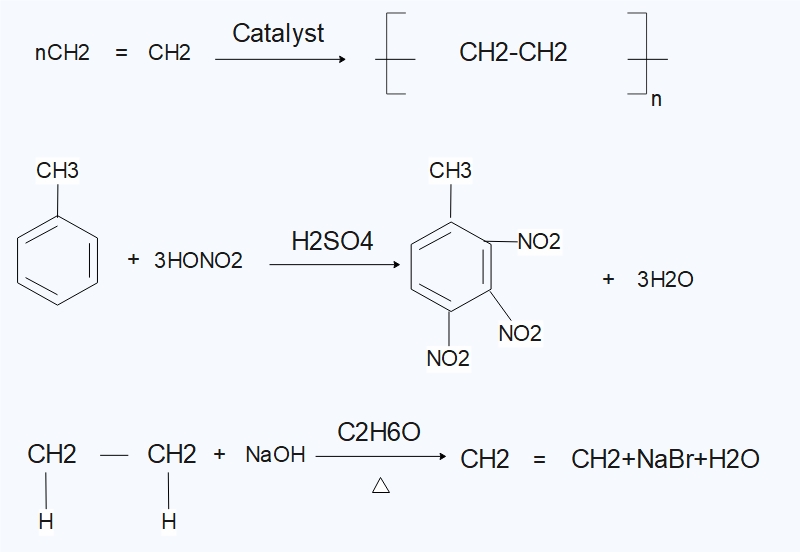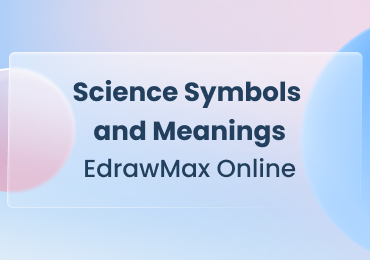Chemical Symbols and Meanings
1. What Are Chemical Symbols
Chemical symbols are the notations that represent chemical elements. Instead of using full names to refer to elements in chemistry, using a symbol made of two letters make things more straightforward. It is a short-hand method used to illustrate better chemical reactions in science diagrams based on how we use short names in our everyday lives.
Using chemical symbols is all about quickly identifying elements and chemical reactions. Early chemists used to assign short names and strange marks to new elements that developed into specific characters over time. Most of the time, you can quickly identify the element by seeing its symbol, which is the purpose of using them.
2. Chemical Symbols Explained
There are about 5 types of symbols in chemistry. We have symbols to represent reactions, symbols to represent conditions and environment, symbols to describe products and properties. All of these symbols are either in the form of alphabets, scientific marks or signs. You are going to find more about the types of chemical symbols and their uses down below.
2.1 Element Symbols
An element symbol is the one or two letter notations used to represent elements in the periodic table. We also use these symbols to name products from a chemical reaction by combining the reactants' symbols. Element symbols are the short name we use for atoms and molecules in chemistry.
There are a hundred and eighteen elements in the periodic table, but that doesn't mean that there are only 118 element symbols. These symbols also represent molecules and compounds. Knowing about all the periodic table signs can identify most of the molecules that you hadn't seen before from their symbols.

Source:EdrawMax Template Community
Some elements with symbols seem irrelevant to their name, but there is no random element symbol. Take silver, for example; in the periodic table, silver goes by Ag. Ag is short for Argentum, which is the Latin name for silver. There are other examples like mercury which goes by Hg.
2.2 Atomic Symbols
Atomic symbols represent atoms, their internal structures and their subatomic particles. Let us first talk about the subatomic particles in the atom. Modern atomic theory gave us a better understanding of atoms and their inner particles. Atoms consist of a nucleus made up of neutrons and positively charged protons. Outside the nucleus, electrons exist in vast space inside an atom.

Source:EdrawMax Template Community
The atomic structure represents the nucleus of the atom with elements circling it in their respective shells. This description is only easy to understand when referring to particles, but you can't do that using plain text when you have to describe molecules or a chemical reaction. Atomic symbols help you illustrate atoms, their particles and their structures.

Source:EdrawMax Template Community
Reading atomic symbols depends on your understanding of ions, atomic number and atomic mass of an atom. The number of electrons tells you the atom's atomic number, and if you can't identify it, you can also use its number of protons to look for its mass number. Using atomic symbols makes it a lot easier to illustrate atoms.
2.3 Molecular Geometry Symbols
Molecular geometry is the three-dimensional representation of structure and atoms present in a molecule. Instead of representing a chemical reaction using atomic symbols, molecular geometry gives us a better insight into everything related to the molecule. You can learn everything about it, starting from its shape, colour, reactivity and phases at reaction time.
Molecular geometry helps out a lot when it comes to complex chemical reactions, and you have to account for every possible detail. Lewis’s electron dot structure is the basis for molecular geometry. It tells us that atoms come together and form molecules. Their chemical behaviour differs, and their shape can depend on the conditions of the reaction.
There are various types of molecular structures depending on the molecule. Some molecules from linear structures, while some form trigonal or angular structures. By looking at the system, you can figure out many things about the molecule and its properties.

Source:EdrawMax Template Community
2.4 Chemical Equation Symbols
We use chemical equations to represent a chemical reaction. If you have an understanding of chemical symbols, then writing a chemical equation is a simple matter. All you have to do is use the formulas for the reactants and the product. Use equation symbols to make a notation for the chemical process and balance the equation.

Source:EdrawMax Template Community
A chemical equation depicts a chemical reaction. You can not show a detailed presentation with molecular geometry using a chemical equation because it only uses element symbols and notable signs to represent the reaction. Following are the additional symbols used in chemical equations.

Source:EdrawMax Template Community
Numeric “+”: This symbol separates reactants from other reactants and products with other products.
Right Arrow: We use a right arrow in the chemical reaction to separate reactants from products.
Upward Arrow: It shows that the product is in a gaseous state. You can also use (g) for the same purpose.
Delta: It represents that heat is applied to the reactants to complete the reaction.
ATM: It tells you about the pressure for the chemical reaction.
Pressure: It represents the presence of atmospheric pressure during the reaction.
Double Arrows: It represents that the reaction can move towards either side.
2.5 Chemical Warning Symbols, Chemical Hazard Symbols, Chemical Safety Symbols
Chemical warning or hazard symbols tells you about the presence of a dangerous chemical. Warning symbols are essential, especially for chemists and people or work in the chemical industry. Some substances are not harmful if you contact a small amount of them, but they can still hurt you if you are not careful enough.
Safety symbols are recognized everywhere in the world. Safety symbols don't use any language, and they are pictograms that anyone can understand just by looking at them once. We use various types of pictograms to warm others and proceed with safety. When dealing with chemical reactions, a physical reaction does not always go along with your theoretical experiments.
Chemicals produce harmful gases that are both flammable or harmful to your health. That is why having safety symbols helps out a lot. You can check the severity of the hazard by looking at the pictures and colour of the safety symbol. A flame on the sign means that the chemicals are flammable. A sign with an exclamation mark tells you that the chemical can irritate your skin. We have four primary categories when it comes to safety symbols.

Source:EdrawMax Template Community
Prohibition
Prohibition signs tell you to stop dangerous activities in certain situations. It gives you a simple message that it is not safe to do certain activities either because it can harm you or you don’t have the permit to do it. The sign is red with a red edging circle and a red diagonal line inside it.
Warning
A warning sign represents a potential hazard. It either tells you that there is danger ahead of you, or you have to pay special attention when you proceed. Warning signs are yellow triangles with some pictogram in them.
Mandatory
A mandatory sign tells you that you must follow the specific rules or do a particular activity. These are typically traffic signs that tell you the rules that are compulsory to abide by. Mandatory signs are round with blue background and white pictograms.
Emergency
Emergency signs indicate the passages or doors for you to use in case of emergencies. It is either a green circle or square with a white pictogram on it.
3. Tips for finding and Using Chemical Symbols
If you want to illustrate a chemical reaction perfectly, you have to use the correct chemical symbols. Drawing these symbols on your own requires effort and time, but you have other options as well. We recommend EdrawMax if you want any chemical symbol for your presentation. Follow these steps to go to chemical symbols in EdrawMax directly.
- Find chemical symbols from EdrawMax Online>Symbol Library>Science.

- There are more than enough symbols in the EdrawMax library for any chemical equation or reaction. If you can't find the symbol you need in the library, you can import it or draw it yourself.
- You can learn more about using symbols in EdrawMax from this video. If the video doesn't play, you can watch it onYouTube.
4. Conclusion
We use various types of chemical symbols in chemistry. There are many symbols for elements, equations and molecular structures. Using the correct symbols is the only way to illustrate anything related to chemistry like atoms, molecules and reactions. EdrawMax Online gives you a wide range of safety and chemical symbols that you can use in your presentation and science diagram. It also gives you the option to draw the symbols yourself if you don't find them in the library. Besides, you can also find science graphic organizer examples from the Template Community.









